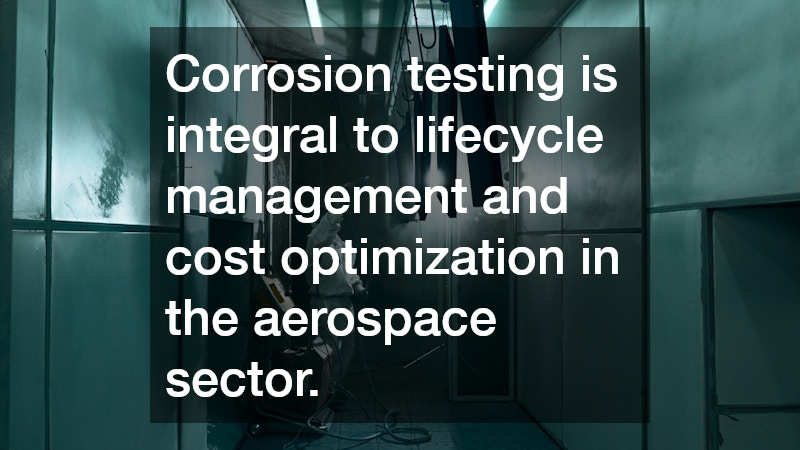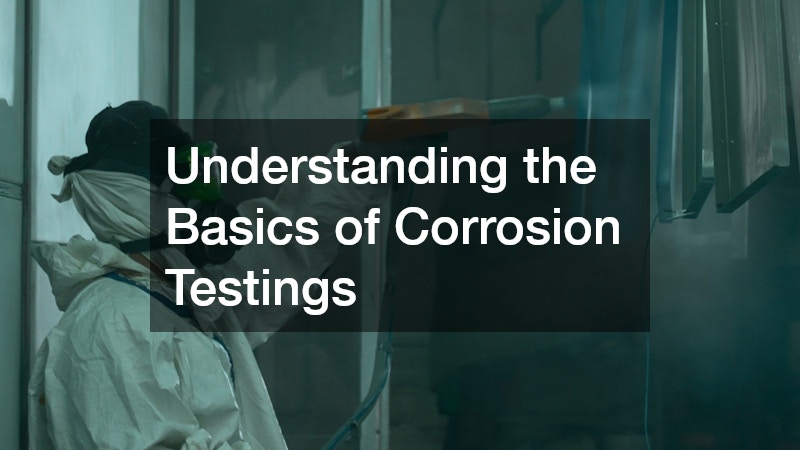Corrosion testings play a pivotal role in various industries, providing critical data that ensures material integrity and longevity. Understanding the fundamental principles behind corrosion testings help engineers and materials scientists develop strategies for prevention and control, directly impacting safety and performance.
Different materials react uniquely to their environments, necessitating a range of testing methods. Each testing method provides insights into how materials might behave over time, under specific conditions.
By exploring and understanding different corrosion testings techniques, industries can select the most appropriate tests for their needs. This ensures that materials meet safety standards and extend their service life.
What Are the Common Types of Corrosion Tests?
Salt Spray Testing
Salt spray testing is a popular laboratory test method used to simulate and evaluate a material’s resistance to a corrosive environment. This test is widely applied in industries that deal with metals and coatings, helping to predict a product’s lifecycle in real-world conditions.
One significant advantage of salt spray testing is its ability to provide quick and consistent results, making it ideal for quality control processes. However, it has limitations, such as not accounting for complicated environmental factors that materials face outside the lab.
Despite these limitations, salt spray testing remains a valuable tool in providing baseline corrosion data. Its controlled environment allows for reproducible tests, which is essential for material selection processes.
Electrochemical Test Methods
Electrochemical test methods are crucial for understanding the corrosion behavior of materials. They provide detailed insights into their electrochemical properties. Potentiodynamic polarization, for instance, helps determine corrosion rates and the effectiveness of corrosion inhibitors.
These methods are appreciated for their precision and ability to be automated, which facilitates large-scale testing with minimal human intervention. The data gleaned from electrochemical tests can be instrumental in developing new materials and protective coatings.
Advanced computational tools often accompany these tests to model and predict long-term corrosion trends, making electrochemical test methods a cornerstone of modern corrosion science. Industries, particularly those in harsh chemical environments, rely heavily on these methods for material development.
How to Interpret Corrosion Test Results?
Understanding Failure Modes
Interpreting corrosion test results begins with identifying failure modes, which are specific patterns or types of degradation found in materials. These failure modes reveal how and why materials fail, providing guidance for future improvements.
Common failure modes, such as pitting, crevice, and uniform corrosion, suggest different underlying mechanisms. Understanding these can prevent unscheduled downtime and maintain safety standards.
Data Analysis Techniques
Data analysis techniques play a vital role in making sense of the empirical data derived from corrosion testings. Employing statistical methods allows engineers to anticipate failure and enhance the durability of materials.
Computational tools, such as machine learning, have revolutionized the analysis of large datasets, providing nuanced insights that were previously unattainable. These techniques support engineers in making data-driven decisions, which enhance material performance and safety.
What Are the Latest Advancements in Corrosion Testing Technology?
Sensor-Based Corrosion Monitoring
Recent advancements in sensor technology have enabled real-time corrosion monitoring, transforming how industries approach material maintenance. These sensors can be integrated into existing systems, providing continuous data streams for proactive management techniques.
Sensor-based monitoring offers the advantage of detecting corrosion onset early, long before visible damage occurs. This technology shifts focus from reactive to preventive maintenance, saving costs and enhancing safety.
Nano-Technology in Corrosion Prevention
Advances in nanotechnology are making significant contributions to corrosion prevention strategies. By manipulating materials at the atomic level, engineers can develop coatings and treatments that offer enhanced protection.
These nano-coatings provide barriers that are more resistant to environmental factors, vastly reducing the rate of corrosion. Their application is particularly beneficial in industries with extreme environmental conditions, like marine and bridge structures.
Why Is Corrosion Testing Critical for the Aerospace Industry?
Safety and Regulatory Compliance
The aerospace industry demands rigorous corrosion testing to ensure safety and compliance with stringent standards. Regulatory authorities mandate severe testing conditions to simulate the harsh environments aircraft encounter.
By adhering to these standards, aerospace manufacturers ensure the structural integrity of components, preventing catastrophic failures. As a result, passengers and crew can trust in the safety and reliability of air travel.
Lifespan and Cost Management
Corrosion testings are integral to lifecycle management and cost optimization in the aerospace sector. It plays a vital role in predicting aircraft maintenance needs and adhering to stringent schedules that guarantee performance and safety.
Accurately forecasting corrosion onset allows airlines to strategically plan maintenance and replacement of components, thereby avoiding unexpected costs. This proactive maintenance strategy maintains aircraft availability and reduces downtimes.
Understanding and implementing appropriate corrosion testing is crucial across industries, providing significant benefits in terms of safety, compliance, and performance optimization. Recent technological advancements, including sensor-based monitoring and nanotechnology, have greatly enhanced corrosion testing capabilities.
The article underscored the importance of applying various testing methods, each tailored to specific industry needs, to assure material longevity and reliability. The aerospace industry, in particular, relies heavily on these testing methods to meet regulatory standards, ensure safety, and optimize costs.


